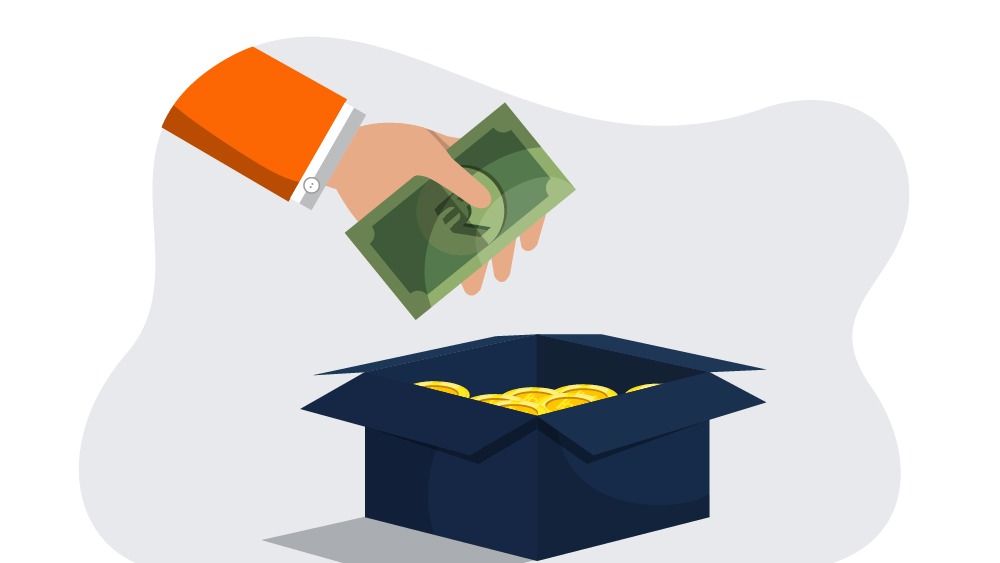An overdraft is a situation that occurs when even though there aren’t enough funds in a person’s account still, they are able to make a transaction or withdraw money.
It is a short-term lending solution provided by a financial institution, usually by a bank. In overdraft, the bank allows the account holder to cover a transaction even if the account holds zero funds.
When an account holder uses the overdraft facility, the amount to be withdrawn is covered, and the account holder can continue to make transactions up to an agreed-upon overdraft limit. There is a minimum fee for using the overdraft service; we will learn about it and more in this blog.
How does an overdraft work?
When you make transactions that exceed your bank account limit, the bank covers you and allows you to make that transaction anyway. This creates a negative balance in your account, which you must pay later.
The bank or financial institution sets a limit on your overdraft, indicating the maximum money you can withdraw from your account. This limit amount is set beforehand through a standard agreement between the lender and bank based on your creditworthiness and account history.
An overdraft can be either authorized or unauthorized. In an Authorized Overdraft, the limit agreement is already set in advance, including the overdraft charges. In an Unauthorized Overdraft, the account holder withdraws money without any prior notice or permission from the bank. The overdraft charges and penalties are usually higher than the authorized overdraft.
Overdrafts are short-term solutions for temporary cash flow issues or unexpected expenses. Although overdrafts are an efficient way to handle temporary financial difficulties or unforeseen expenses, a customer must be aware of the additional charges or penalties before availing of this facility. These charges keep varying depending on the bank or the financial institution.
Where does this extra money come from?
When a bank covers a customer’s overdraft, it has two options. It can either use its own money to fund its transaction, or it can simply connect the customer’s credit card to cover the overdraft, and the customer would just have to repay the amount like they pay their credit card bills.
If the bank chooses to use its own funds, it won’t affect the account holder’s credit score, but if the bank chooses to pay for the overdraft with the account holder’s credit card, then there are chances of it affecting the customer’s credit score.
How are overdrafts protected?
Overdraft protection is a service that financial institutions provide to protect their customers from spending more money than they have in their accounts and from facing overdraft fees or negative balances, or both. The primary purpose of overdraft protection is to prevent
There are multiple ways in which finance companies implement overdraft protection.
Some standard methods of overdraft protection are:
- Overdraft Limits: banks usually offer customers a pre-approved overdraft limit. This limit is more like a safety net for them for times when they do not have enough in their account. Once the customer reaches their overdraft limit, the bank may not allow any more transactions, and if it does, it would require you to pay some additional charges.
- Grace Periods: Some banks offer their customers a grace period when they accidentally spend more money than they have in their accounts. During this grace period, banks give their customers a little more time to deposit enough money into their accounts. This is done to give customers a chance to fix their situation without having to pay any extra charge or penalty.
- Fee Waivers: In many cases, banks waive the customer’s overdraft fees if the customer has been experiencing a financial crunch or exceptional circumstances. These policies vary from bank to bank.
Overdraft vs. Personal Loan
|
On the basis of |
Overdraft |
Personal Loan |
| Access of funds | Customers can withdraw more money than they have in their accounts. |
Customers can borrow a specific amount of money |
|
Term and Repayment |
Repaid when customer deposits money into their account | It comes with a fixed time period with regular payments to repay |
|
Interest and charges |
Interest is applied on the overdrawn amount for the period it remains unpaid. | Interest is applied on the entire borrowed amount and may have additional fees. |
| Usage | For occasional expenses |
For re-planned purposes like buying a house or starting a business. |
Conclusion
Even though over-drafting might seem easy, it’s essential to understand that an overdraft is not free money. It’s essentially a loan provided by the bank, and just like any other loan, it comes with interest that you need to pay back. By being mindful of the amount you borrow and promptly repaying the debt, you can effectively leverage the benefits of an overdraft without falling into a cycle of accumulating unnecessary debt.
PayMe is an RBI-registered Indian lending Fintech company providing quick personal loans online to individuals and small businesses at low-interest rates. PayMe aims to bridge the gap between traditional lending institutions and borrowers who may need to meet their stringent requirements. With a user-friendly platform and fast loan approval process, PayMe is committed to providing its customers with financial freedom, Quick disbursal, and flexibility. In addition, the company aims to provide fast loan approval to empower individuals and businesses to achieve their goals by providing timely access to the necessary funds. PayMe’s customer-centric approach and innovative technology make it a leader in the Indian lending Fintech industry.




